
The Ten Years' War, also known as the Great War and the War of '68, was part of Cuba's fight for independence from Spain. The uprising was led by Cuban-born planters and other wealthy natives. On 10 October 1868, sugar mill owner Carlos Manuel de Céspedes and his followers proclaimed independence, beginning the conflict. This was the first of three liberation wars that Cuba fought against Spain, the other two being the Little War (1879–1880) and the Cuban War of Independence (1895–1898). The final three months of the last conflict escalated with United States involvement, leading to the Spanish–American War.

Lt. General José Antonio de la Caridad Maceo y Grajales was a Cuban general and second-in-command of the Cuban Army of Independence.
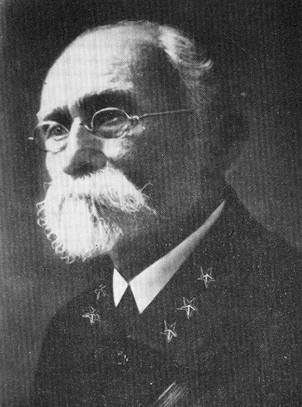
Máximo Gómez y Báez was a Dominican Generalissimo in Cuba's War of Independence (1895–1898). He was known for his controversial scorched-earth policy, which entailed dynamiting passenger trains and torching the Spanish loyalists' property and sugar plantations—including many owned by Americans. He greatly increased the efficacy of the attacks by torturing and killing not only Spanish soldiers, but also Spanish sympathizers and especially Cubans loyal to Spain. By the time the Spanish–American War broke out in April 1898, the rebellion was virtually defeated in most of Western Cuba, with only a few operating pockets in the center and the east. He refused to join forces with the Spanish in fighting off the United States, and he retired to the Quinta de los Molinos, a luxury villa outside of Havana after the war's end formerly used by captains generals as summer residence.

Cruces is a municipality and town in Cienfuegos Province, Cuba. It is the home of the Mal Tiempo National Park which commemorates a battle in the 1895 War of Independence.

The mambises were the guerrilla independence soldiers who fought for Cuba's independence from Spain in the Ten Years' War and Cuban War of Independence.
The Battle of El Jobito was a military event which took place on May 13 of 1895 in Oriente Province of Cuba, in the Cuban War of Independence.
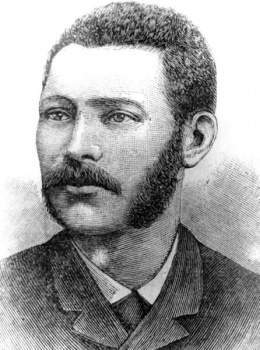
José Marcelino Maceo Grajales was a Cuban Independence Activist and patriot of the 19th Century.
The Invasion from East to West took place on the island of Cuba, and began on October 22, 1895, in Mangos de Baraguá, in the former province of Oriente. It was organized and directed by Antonio Maceo Grajales and Máximo Gómez. The Liberation Army, guided by the firmness of taking the fight against Spanish colonialism to all corners of Cuba, starred in one of the most relevant events in Cuban history. In the midst of the "Cuban War of Independence", inspired by José Martí, that campaign responded to the old desire of the insurgent generals Maceo and Gómez. These launched the strategy of limiting the liberation struggle to the eastern territory of the Island, but rather extending it throughout the entire Cuban territory to force Spain to fight simultaneously in the six provinces that the country had at that time, in order to weaken it on all fronts.
The Battle of Iguará was a battle of the Cuban War of Independence which took place on December 13, 1895 in the Santa Clara Province, Cuba.
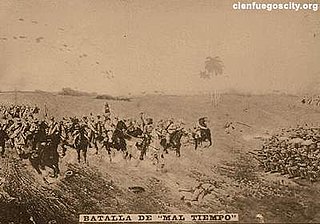
The Battle of Mal Tiempo was a battle of the Cuban War of Independence that took place on December 15, 1895, a few kilometers away from Cruces, Cienfuegos Province. In the battle, Mambises and Spanish forces faced each other, the former being victorious. This victory was considered one of the most important of the Invasion from East to West in Cuba, due to the political, military and economic consequences in favor of the independence activists.
The Battle of Coliseo was a group of military actions carried out in the surroundings of the town of the same name, Matanzas Province, Cuba on December 23, 1895 during the Cuban War of Independence.
The Battle of Las Taironas was a battle of the Cuban War of Independence that took place on January 17, 1896 at Pinar del Río between Cuban forces led by Major General Antonio Maceo and the Spanish led by lieutenant colonel Ulpiano Sanchez Echevarria who was a Cuban native.
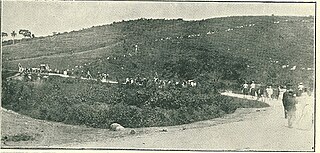
The Lanzadera Campaign was a significant part of the Cuban War of Independence as it was the next operation of the Mambises by Máximo Gómez to distract Spanish troops to him and avoiding their pressure on Antonio Maceo, who was able to continue to the West to complete the Invasion from East to West in Cuba. The campaign was considered to be one of skillful maneuvering, mobility and oversight as Gómez's vastly outnumbered 2,000 Mambises had achieved their goals with negligible losses against the 40,000 Spanish infantry which was commanded by Arsenio Martínez Campos, Sabás Marín and Valeriano Weyler.
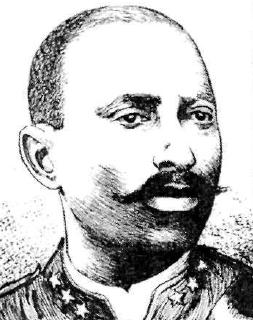
Pedro Antonio Díaz Molina was a Cuban general who was the only former slave that was a major general in the Cuban Liberation Army.

Juan Evangelista Delgado González was a Cuban colonel who participated during the Cuban War of Independence. He was known for retrieving the bodies of Antonio Maceo Grajales and Panchito Gómez Toro during the Battle of San Pedro where both were killed in the battle.
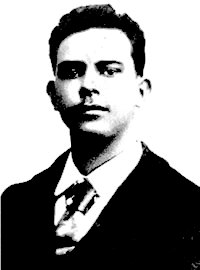
Francisco "Panchito" Gómez Toro was a Cuban lieutenant and war hero in the Cuban War of Independence. He was known for being the son of Máximo Gómez and for his death at the Battle of San Pedro at the young age of 20.

The La Reforma Campaign was a campaign of the Cuban War of Independence which was waged for 16 months with the Cuban forces under the command of Máximo Gómez against the Spanish forces under the command of Valeriano Weyler. Despite the Spanish outnumbering the Cuban forces by 40,000 to 600, Gómez's guerrilla warfare tactics as well as the weather caused over 40 Spanish soldiers to die each day throughout the campaign. His approach was to divide his forces into tiny guerrilla groups and fight alone with his General Staff while continuously moving.
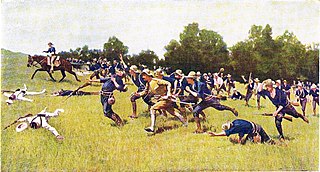
The Second Eastern Campaign was a military campaign that took place between August 1 to 12, 1898, in the Oriente Province of Cuba during the Cuban War of Independence. It was the shortest military campaign of the entire war and it was the one that marked the end of Spanish reign in Cuba and the Spanish Empire in Latin America.

Eusebio Hernández Pérez was a Cuban eugenicist, obstetrician, and mambí in the Ten Years' War, Little War, and Cuban War of Independence. He reached the rank of brigadier general in the Ejército Mambí and was professor at the University of Havana. Sarduy Nápoles named him "The Father of Cuban Obstetrics". He and Domingo Ramos Delgado posited the idea of homiculture, which integrated into the eugenics movement with the two diverging in thought.
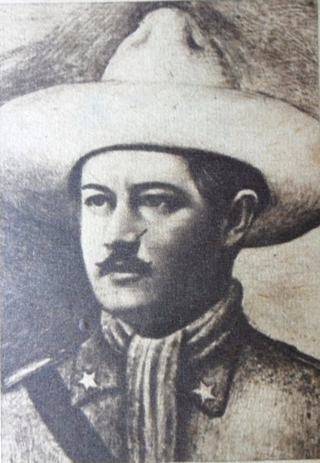
Alberto Rodríguez Acosta was a Cuban Brigadier General of the Cuban War of Independence. He was known for commanding the Second Division of the V Corps and would primarily operate in actions within the Invasion from East to West in Cuba.















